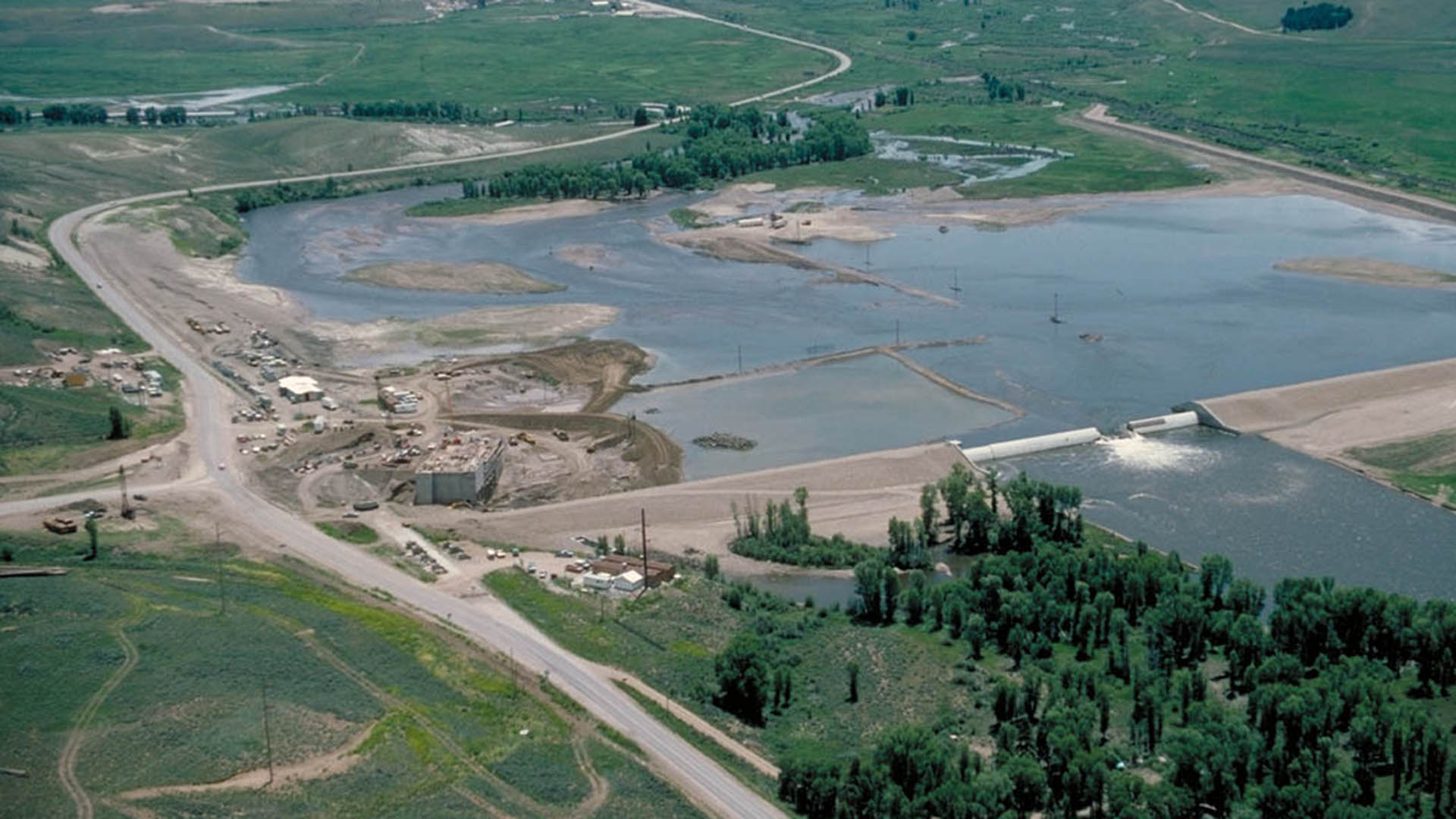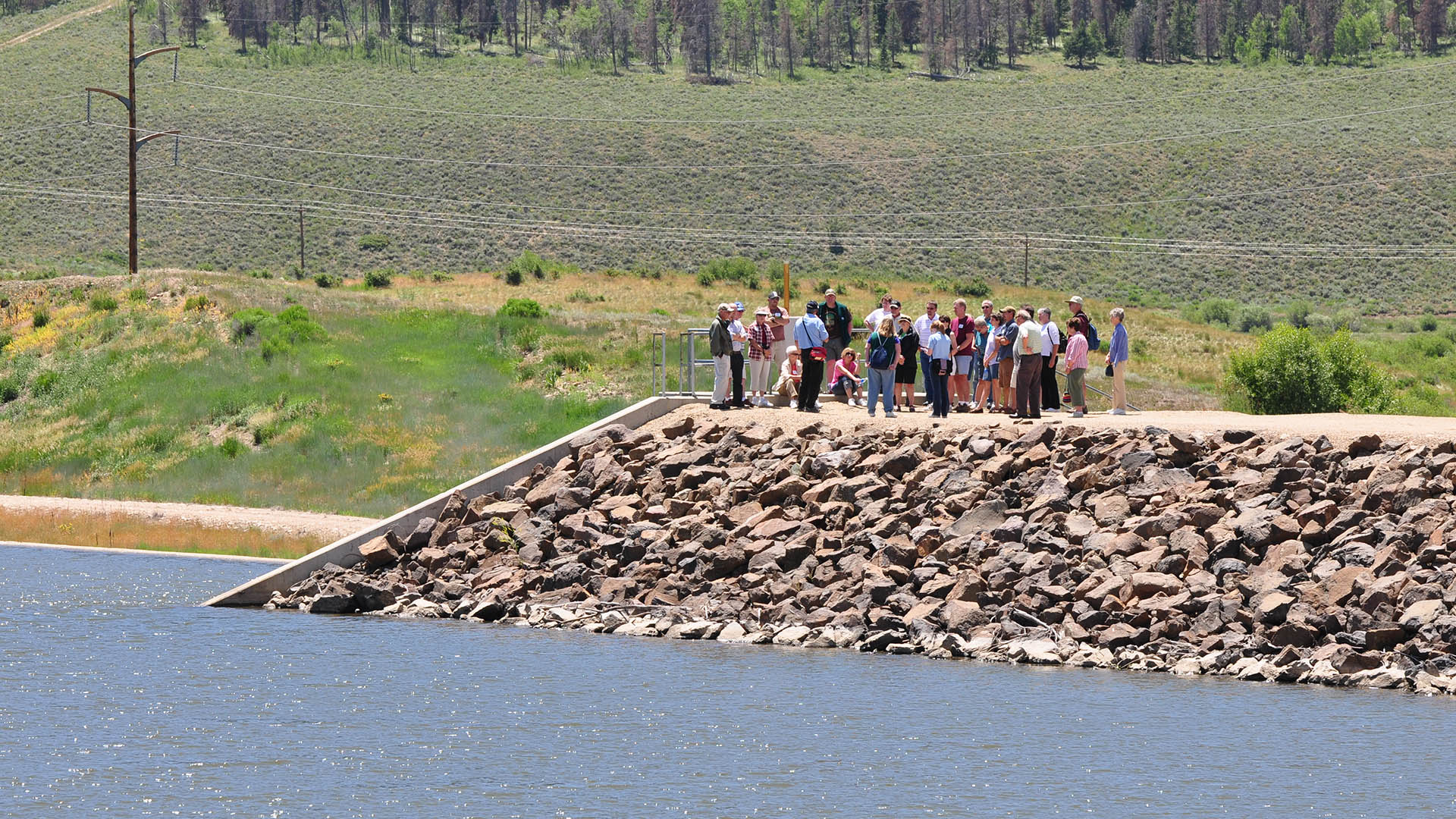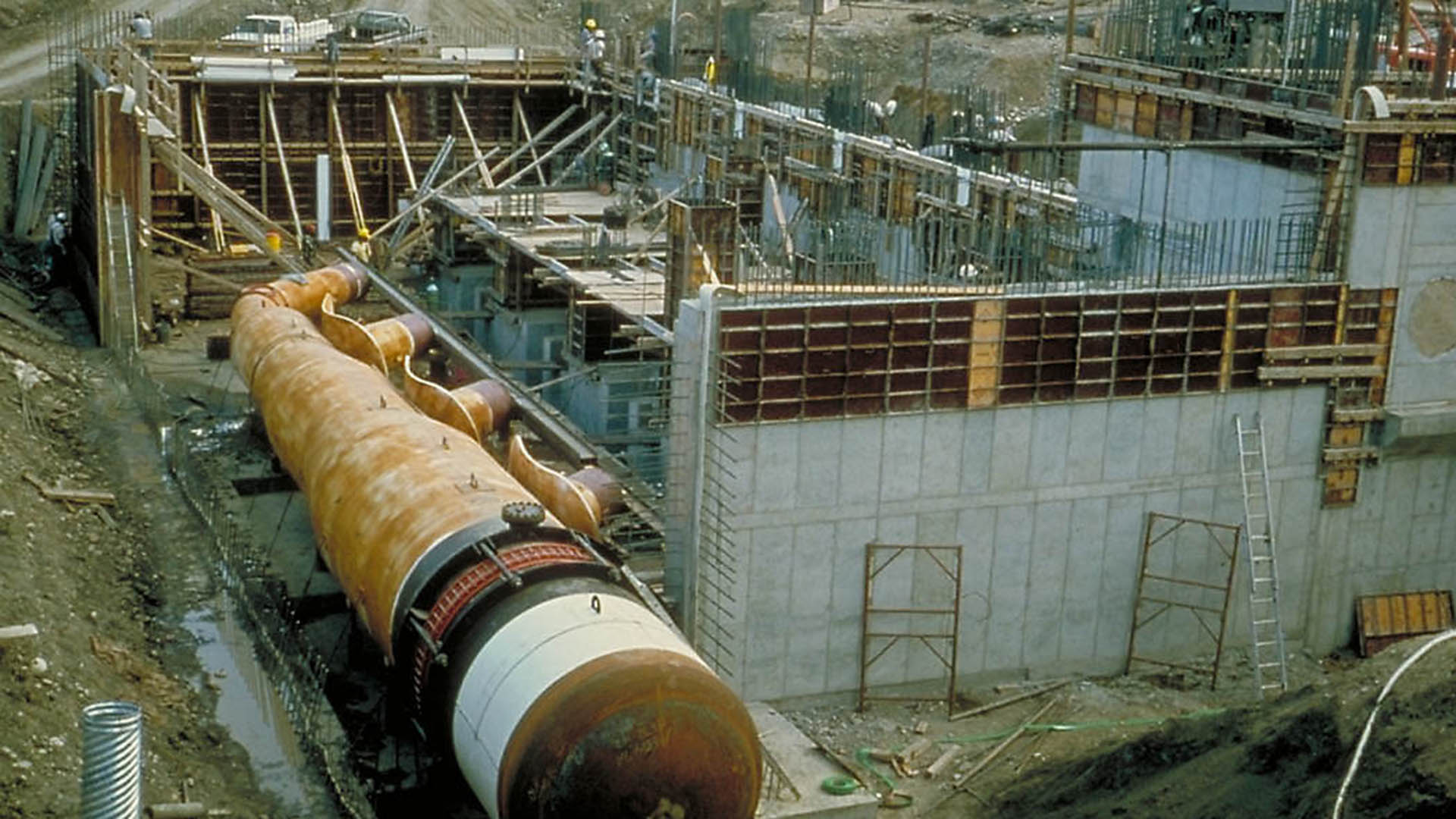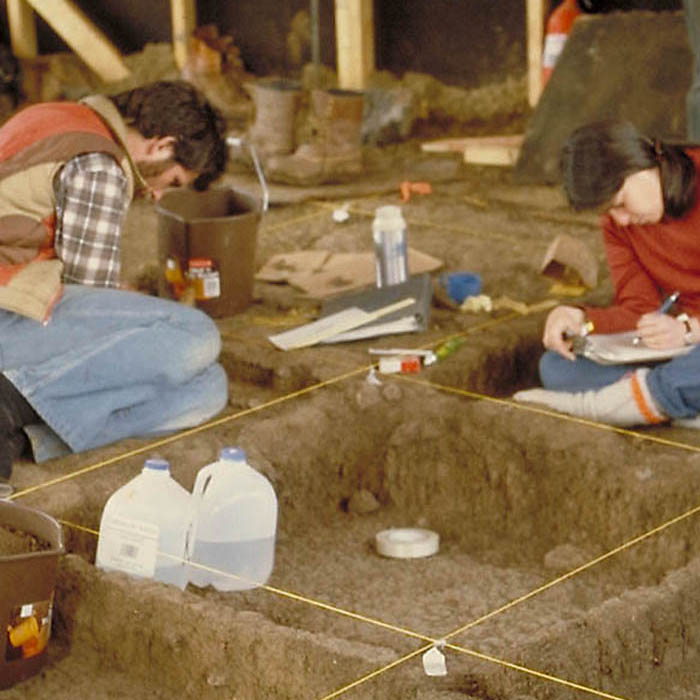Windy Gap History
Securing Water Rights on the Colorado River
The Windy Gap Project’s origins stretch back to the summer of 1967 when Longmont Mayor Ralph Price filed for water rights on the Colorado River. Price was acting as trustee for a coalition of six northern Colorado cities: Boulder, Estes Park, Fort Collins, Greeley, Longmont and Loveland.
A Geologic Cut Called Windy Gap
The project site is at a geologic cut called Windy Gap, just below the confluence of the Colorado and Fraser rivers. The cities envisioned Windy Gap as a future water supply and solution to meet the needs of a rapidly growing northern Front Range.
After studying growth rates and water supply demand projections, the six cities chose to pursue the Windy Gap Project to meet their future municipal needs.
Follow the Complete Project History Timeline

Municipal Subdistrict Formed
In 1969, the participants realized that the work and expertise needed to build Windy Gap Project required a stronger organization than they could provide independently. The Municipal Subdistrict was formally established on July 6, 1970 with the same powers and legal standing as Northern Water, the “parent’ district.
Following completion and approval of an Environmental Impact Statement and acquisition of 23 permits and licenses, Windy Gap Project construction began in July 1981. The project was completed in 1985 and began delivering water to Municipal Subdistrict allottees that same year.
Today, the Windy Gap Project consists of a diversion dam on the Colorado River that creates the 255-acre-foot Windy Gap Reservoir, a pumping plant and a six-mile pipeline to Lake Granby.
Carriage Contract
After its formation, the Municipal Subdistrict negotiated a carriage contract with the U.S. Bureau of Reclamation and Northern Water specifying how Windy Gap water would be stored and carried to the East Slope cities through the Colorado-Big Thompson Project. The carriage contract was executed in October 1973 and is crucial for the Windy Gap Project. With the ability to use a portion of the C-BT Project’s storage and conveyance capacity, the Windy Gap Project is economically and environmentally viable.

Construction
Windy Gap construction officially began with a groundbreaking ceremony on July 11, 1981, following nearly 17 years of planning and negotiations. International Engineering Company managed the project, Western States Construction Company built the pump plant and part of the pipeline, and Johnson Brothers Corporation installed the remainder of the pipeline.
Despite a flood at the pumping plant in 1983 and a shutdown for archaeological investigations, the project was completed within four years at a total cost of approximately $120 million. After a testing period the Windy Gap Project was ready to operate the spring of 1985.

Archaeological Findings
Archaeology played an important role during Windy Gap Project construction. While excavating the pipeline route in September 1981 north of Granby, crews unearthed several Native American ruins dating back 4,000 to 8,000 years.
Construction halted and archaeologists from Western Cultural Resource Management of Boulder excavated the sites, which were later deemed eligible for placement on the National Register of Historic Places. Since the dig sites were on private property and therefore ineligible for federal funding, the Subdistrict provided $370,000 to excavate and study the finds. The federal government obtained an additional $85,000 from private foundations.
Pipeline construction resumed in August 1982. The Grand County Museum in Hot Sulphur Springs contains an exhibit about the archaeological excavations, including a scale model and representations of the artifacts. The museum also features a related exhibit about Native Americans.
